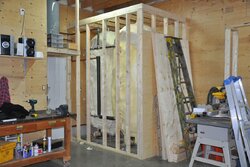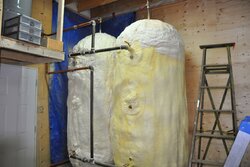It has been discussed a bunch but most of the threads are a few to many years old. I'm wondering what today's standards of insulation on storage tanks is. I have a local spray foamer that has done work for me before. I was wondering about going with spray foam alone.
My tanks will be up against a wall in my garage the wall will be insulated but how much should I go with?
How much insulation should I put around my tanks obviously more is better but what would be bare minimum?
And if not Spray foam what should I use?
Thanks for any help in advance.
My tanks will be up against a wall in my garage the wall will be insulated but how much should I go with?
How much insulation should I put around my tanks obviously more is better but what would be bare minimum?
And if not Spray foam what should I use?
Thanks for any help in advance.



